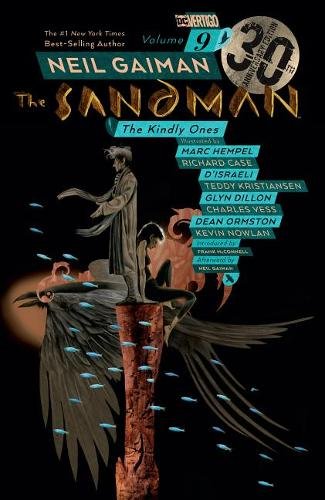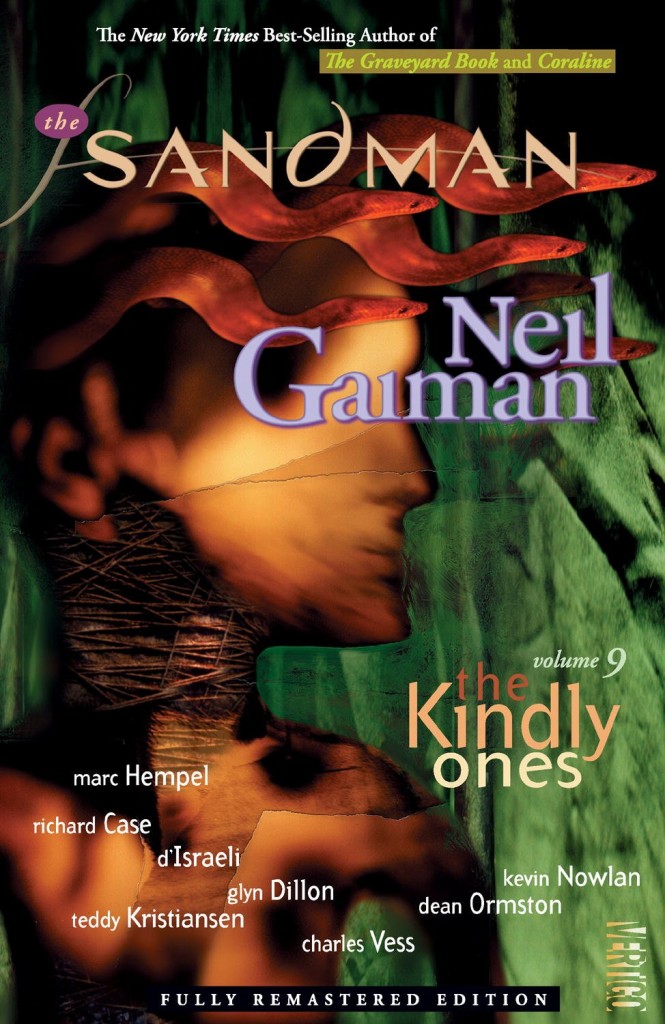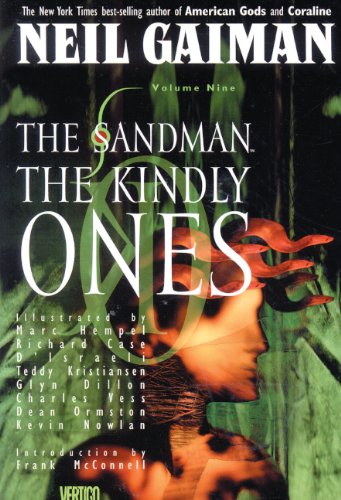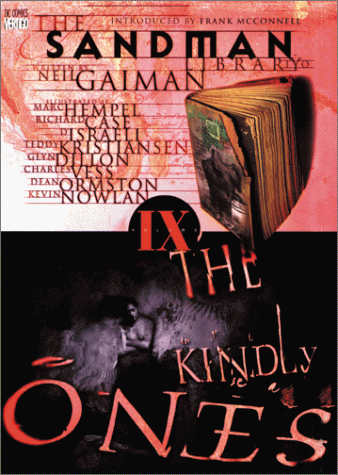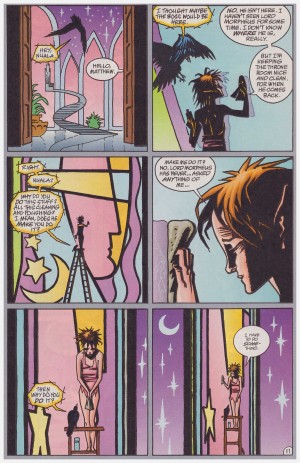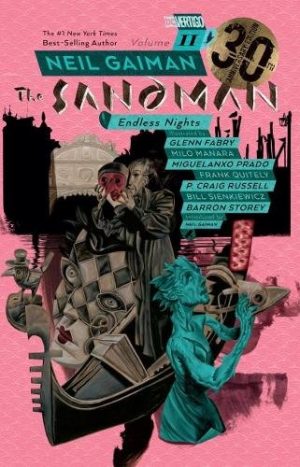Review by Karl Verhoven
Over eight previous Sandman graphic novels Neil Gaiman supplied an astonishing variety of stories, almost all of them impressive. There had been, however, one form absent, the cornerstone of fantasy: the epic. The Kindly Ones is it, and it’s problematical.
Before we reach it, there’s an appetiser, a whimsical introduction piece to the primary residents of the Dreaming. It’s very nicely drawn by Kevin Nowlan, but defines the fairy Nuala rather differently than the main story.
Despite being followed by The Wake, this is very much a valedictory tour, revisiting many characters seen previously. Few, however, provide relevance, lacking insight or the propensity to propel the plot, and we’re inflicted with several of these interludes amid a tale that’s already taking an enormous number of pages to say very little indeed. The suspicion is that the greater the accumulation of awards for Sandman, the lighter the editing became. At times the overall pacing is positively glacial, and this appears deliberate, Gaiman even commenting on it, extending a metaphor introduced in the opening pages: “It’s happening very slowly, but it’s happening. It always takes longer than you think, doesn’t it?”
The primary plot thread is the disappearance of Daniel, infant son of Lyta Hall, and the effect this has on her fragile sanity. Simultaneously Dream potters around his realm in the manner of a gardener rooting around the allotment shed, Nuala returns to Faerie, Lucifer tinkles the ivories at a night club, the Furies bicker, and Loki, unaccountably freed in Season of Mists, is up to no good. That sums up roughly the first five chapters. At that point we reach a welcome nasty prose and illustration interlude with Charles Vess contributing the art.
Marc Hempel illustrates the bulk of the material, utilising a fine sense of design. His jagged and blocky art is initially jarring, even in a series that’s adapted to, even thrived on, changing artistic interpretation, but by virtue of the sheer number of pages he imposes his version of Dream’s world and contacts. He is noticeably rushed by the final chapter, though.
Beyond the halfway point the pace picks up a little, but we then run into a second narrative problem. Some things will occur because that’s the way it is, immutably so. Gaiman’s clever enough to dress this up, but that’s what it amounts to, and it’s unsatisfying. Anyone that can put this to one side receives scant reward. Conversations, previously so witty and sparkling, are comparatively dreary, giving so little. Even a final talk between Dream and Death is elliptical and resigned.
There is a view that the entire run of Sandman is the final act of a drama, that the path first trodden in Preludes and Nocturnes leads, inevitably, here. Gaiman certainly addressed most outstanding issues, with a few more tied up in The Wake, but could have told the same story far more concisely and satisfyingly. There are nice touches, but they require mining from the resolutely ordinary.
The fourth volume of Absolute Sandman contains The Kindly Ones, in an oversize hardcover format and accompanying slipcase, the pages re-mastered and re-coloured. Those pages also appear in volume two of the bulky Sandman Omnibus, while volume four of The Annotated Sandman features Gaiman’s inspirations and references on a page by page, and sometimes panel by panel basis. There the art is in black and white.
If on a budget, or just preferring the traditional paperback format, the production tinkering is relatively minimal, so the choice amounts to whether you like the original colouring more than the updated palette in post 2010 editions.
